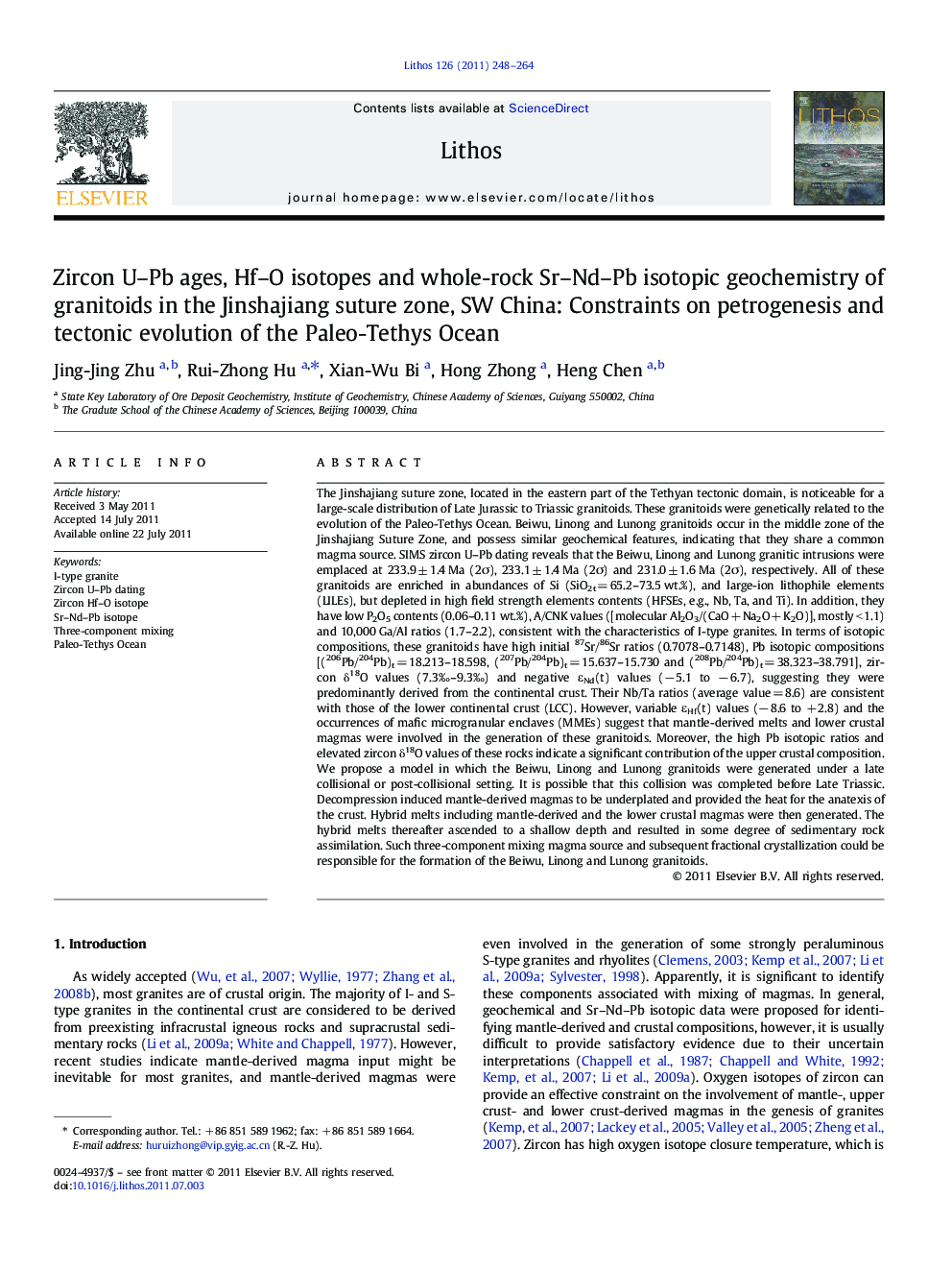| Article ID | Journal | Published Year | Pages | File Type |
|---|---|---|---|---|
| 4716715 | Lithos | 2011 | 17 Pages |
The Jinshajiang suture zone, located in the eastern part of the Tethyan tectonic domain, is noticeable for a large-scale distribution of Late Jurassic to Triassic granitoids. These granitoids were genetically related to the evolution of the Paleo-Tethys Ocean. Beiwu, Linong and Lunong granitoids occur in the middle zone of the Jinshajiang Suture Zone, and possess similar geochemical features, indicating that they share a common magma source. SIMS zircon U–Pb dating reveals that the Beiwu, Linong and Lunong granitic intrusions were emplaced at 233.9 ± 1.4 Ma (2σ), 233.1 ± 1.4 Ma (2σ) and 231.0 ± 1.6 Ma (2σ), respectively. All of these granitoids are enriched in abundances of Si (SiO2t = 65.2–73.5 wt.%), and large-ion lithophile elements (LILEs), but depleted in high field strength elements contents (HFSEs, e.g., Nb, Ta, and Ti). In addition, they have low P2O5 contents (0.06–0.11 wt.%), A/CNK values ([molecular Al2O3/(CaO + Na2O + K2O)], mostly < 1.1) and 10,000 Ga/Al ratios (1.7–2.2), consistent with the characteristics of I-type granites. In terms of isotopic compositions, these granitoids have high initial 87Sr/86Sr ratios (0.7078–0.7148), Pb isotopic compositions [(206Pb/204Pb)t = 18.213–18.598, (207Pb/204Pb)t = 15.637–15.730 and (208Pb/204Pb)t = 38.323–38.791], zircon δ18O values (7.3‰–9.3‰) and negative εNd(t) values (− 5.1 to − 6.7), suggesting they were predominantly derived from the continental crust. Their Nb/Ta ratios (average value = 8.6) are consistent with those of the lower continental crust (LCC). However, variable εHf(t) values (− 8.6 to + 2.8) and the occurrences of mafic microgranular enclaves (MMEs) suggest that mantle-derived melts and lower crustal magmas were involved in the generation of these granitoids. Moreover, the high Pb isotopic ratios and elevated zircon δ18O values of these rocks indicate a significant contribution of the upper crustal composition. We propose a model in which the Beiwu, Linong and Lunong granitoids were generated under a late collisional or post-collisional setting. It is possible that this collision was completed before Late Triassic. Decompression induced mantle-derived magmas to be underplated and provided the heat for the anatexis of the crust. Hybrid melts including mantle-derived and the lower crustal magmas were then generated. The hybrid melts thereafter ascended to a shallow depth and resulted in some degree of sedimentary rock assimilation. Such three-component mixing magma source and subsequent fractional crystallization could be responsible for the formation of the Beiwu, Linong and Lunong granitoids.
► The three granitoids under study are genetically related to the evolution of the Paleo-Tethys. ► Zircon U–Pb dating results reveal they were all emplaced at ca. 230 Ma. ► A three-component mixing model is proposed to explain the petrogenesis of the granitoids. ► They were generated under a post-collisional or late collisional tectonic setting.
